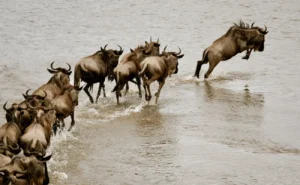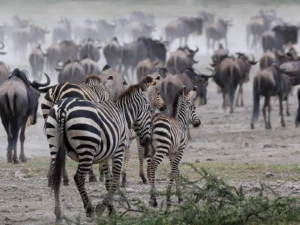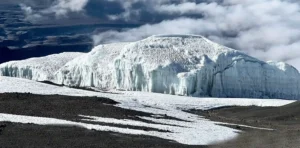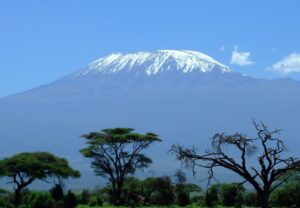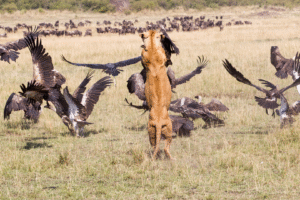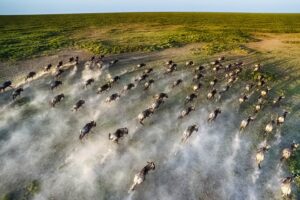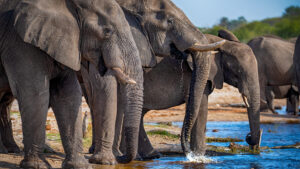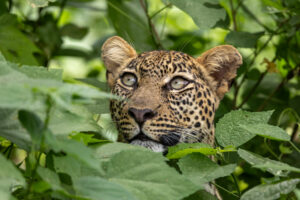The Great Serengeti Migration: A Journey Through the World’s Greatest Wildlife Spectacle
If there’s one natural event that makes every traveler pause, breathe in deeply, and feel the raw power of Africa, it’s the great Serengeti migration. This is not just any wildlife movement; this is the planet’s largest overland migration, a circular journey of nearly two million wildebeests, zebras, and gazelles moving across the Serengeti–Mara ecosystem in search of greener pastures. For many travelers, witnessing the great Serengeti migration is a lifelong dream a moment they’ll retell for decades.
From thundering hooves to heart-pounding river crossings, the great Serengeti migration offers moments that feel almost unreal. But before you pack your bags and jump on a plane, you need to understand what makes this migration so special and how to experience it properly. That’s where this guide comes in.
Let’s wander through the experience together slowly, vividly, like a story you’ll remember long after the dust settles.
What Makes the Great Serengeti Migration So Extraordinary?
Almost every continent has migrating animals, but nothing compares to the great Serengeti migration. You’re not watching a few herds shift from one valley to the next you’re watching millions of animals move in a synchronized dance shaped by instinct, weather, and survival.
To stand in the Serengeti and watch the great Serengeti migration unfold feels like stepping into a wildlife documentary. The air vibrates with the sound of hooves. Dust rises in tall spirals. Predators stalk the edges. Calves stumble beside their mothers. It’s raw and beautiful.
This natural phenomenon is a continuous loop. It happens all year, changing form every month. And that’s the magic of the great Serengeti migration no two days ever look the same.
The Route: How the Great Serengeti Migration Moves Each Year
Understanding the route of the great Serengeti migration helps you plan when and where to go. Here’s the typical journey:
January–March: Calving Season (Southern Serengeti)
This is the time when mothers give birth, turning the plains into a nursery. You’ll see thousands of newborns stand and run within minutes. And where there are babies, predators follow. If dramatic sightings interest you, this is the heart of the great Serengeti migration.
April–June: The Long March North
As rains shift, so does the grass. The herds start pushing northwest toward the Grumeti River. This is one of the longest, most photogenic stretches of the great Serengeti migration.
July–September: The Legendary River Crossings
This is the moment most travelers dream of. The Mara River crossings are the most iconic part of the great Serengeti migration. It’s messy, adrenaline filled, and breathtaking.
October–December: Wandering the Northern Plains
After surviving the crossings, the herds begin drifting back toward the Serengeti, completing the iconic cycle of the great Serengeti migration once again.
Wherever you go, the landscape feels alive etched with hoofprints, dust clouds, and the rhythm of movement.
Why Travelers Are Obsessed With the Great Serengeti Migration
There are safaris, and then there is the great Serengeti migration safari. Travelers return again and again for one reason: this event is impossible to fully absorb in one viewing.
Here’s what makes it unforgettable:
1. The Scale
No other wildlife event comes close. Watching nearly two million animals move as one makes you feel tiny in the best way possible.
2. The Drama
Lion hunts, crocodile ambushes, river struggles, thunderstorms the great Serengeti migration is nature’s most intense theatre.
3. The Unpredictability
Nothing is staged. Everything unfolds naturally. That spontaneity is the beauty of the great Serengeti migration.
4. The Photography
If you’re a photographer, the great Serengeti migration is paradise. Soft golden light, dramatic skies, and endless landscapes filled with wildlife.
5. The Emotional Impact
Many travelers say witnessing the great Serengeti migration feels spiritual. It’s a connection to the ancient rhythm of life.
Best Time to Witness the Great Serengeti Migration
There is no “bad time” to see the great Serengeti migration, but what you see changes by season.
For Calving Action (January–March)
Choose the southern Serengeti.
For Long Herd Movements (April–June)
Go west watch herds stretch for miles.
For River Crossings (July–September)
Head to the Mara River. This is peak the great Serengeti migration drama.
For Peaceful Savannah Scenes (October–December)
The northern plains and Lobo area shine.
The secret to witnessing the great Serengeti migration at its best is matching your expectations with the right month.
Where to Stay During the Great Serengeti Migration
Your lodge choice shapes your experience. Here’s what works best:
Mobile Migration Camps
These follow the herds, allowing you to stay close to the great Serengeti migration no matter which month you visit.
Luxury Lodges
If comfort matters, choose lodges in:
- Northern Serengeti (for crossings)
- Southern Serengeti (for calving)
- Western Corridor (for the long march)
Some camps even offer hot-air balloon safaris a magical way to watch the great Serengeti migration unfold at sunrise.
How to Plan a Great Serengeti Migration Safari
1. Book Early
Accommodations during the great Serengeti migration fill up fast, especially in July–October.
2. Use a Local Expert
Locals understand the timing of the great Serengeti migration better than anyone.
3. Choose the Right Vehicle
A good safari car is critical. You’ll spend hours tracking the great Serengeti migration.
4. Pack Properly
Layers, good shoes, binoculars, sunscreen, and a camera are must haves.
5. Stay Flexible
The herds move unpredictably. A flexible itinerary gives you the best chance of catching the great Serengeti migration at its peak.
Things No One Tells You About the Great Serengeti Migration
Here are insider truths from guides who follow the great Serengeti migration year-round:
- Patience pays off. Sometimes you wait hours for action.
- River crossings are chaotic and emotional.
- The smell of dust, grass, and animals is all part of the experience.
- Weather can change everything rain can shift the entire direction of the great Serengeti migration.
- The best sightings often happen early morning or late afternoon.
Travelers who understand these nuances enjoy the great Serengeti migration more fully.
Is the Great Serengeti Migration Suitable for Families?
Absolutely. Kids find the great Serengeti migration thrilling. The energy, the animals, the open spaces it’s a natural classroom. Many lodges offer:
- Family tents
- Child-friendly menus
- Nature walks
- Cultural experiences
A family safari during the great Serengeti migration is one your children will remember forever.
Photography Tips for the Great Serengeti Migration
To capture the great Serengeti migration beautifully:
- Shoot during golden hours
- Use burst mode for running animals
- Carry a 100 400mm lens
- Don’t forget wide-angle shots they tell the story of scale
- Keep your camera ready; action happens fast
Photographers often say that the great Serengeti migration gives them their best wildlife shots of the year.
The Emotional Side of the Great Serengeti Migration
Beyond the science and the safari logistics, the great Serengeti migration hits you emotionally. You feel connected to something ancient and powerful something that existed long before cities, cars, or borders.
You may feel a sense of wonder.
You may feel humbled.
You may even feel emotional watching the struggle for life at the rivers.
The great Serengeti migration isn’t just a wildlife event it’s a reminder of how alive the world really is.
Why the Great Serengeti Migration Should Be on Your Bucket List
If you’re looking for a trip that leaves you changed in the best way, make time for the great Serengeti migration. This is Africa at its most raw, most beautiful, and most unforgettable.
You witness courage in the calves.
You witness strategy in predators.
You witness determination in every step the herds take.
And somewhere in that dust and sunlight, you find your own sense of wonder.
The great Serengeti migration is not just a safari experience.
It’s a storyone you become part of the moment you arrive.

